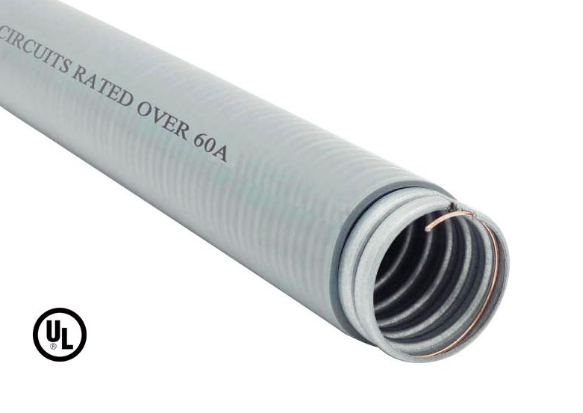Jul. 20, 2023
Liquid-tight flexible metal conduit (LFMC) is a type of conduit designed to protect electrical wiring from moisture, oils, chemicals, and other environmental hazards. It is commonly used in industrial, commercial, and outdoor applications where electrical installations are exposed to harsh conditions. The temperature limitations of LFMC depend on various factors, including the materials used in its construction and the specific standards and certifications it complies with. Here are the key temperature limitations that apply to liquid-tight flexible metal conduit:
1. Temperature Rating of Materials:
The temperature rating of LFMC is influenced by the materials used in its construction. The primary components of LFMC are the metallic core and the outer protective coating or jacket. The temperature ratings of these materials are critical in determining the overall temperature limitations of the LFMC.
a. Metallic Core:
The metallic core of LFMC is typically made of steel or aluminum. Steel is a common choice due to its strength and durability. The temperature rating of the steel core is determined by the type of steel used and its ability to withstand elevated temperatures without losing its mechanical properties. Standard carbon steel LFMC typically has a temperature rating of approximately -20°C to 80°C (-4°F to 176°F).
b. Outer Protective Coating or Jacket:
The outer jacket of LFMC is usually made of PVC (polyvinyl chloride), thermoplastic rubber (TPR), or other materials that provide resistance to liquids and environmental factors. The temperature rating of the outer jacket depends on the specific material used. For example, PVC jackets typically have a temperature rating of -20°C to 60°C (-4°F to 140°F), while TPR jackets may have a higher temperature rating of -40°C to 80°C (-40°F to 176°F).

Liquid Tight Flexible Metal Conduit-PULTG Series (UL 360)
2. UL and CSA Standards:
In North America, liquid-tight flexible metal conduit is often certified by Underwriters Laboratories (UL) and the Canadian Standards Association (CSA). These organizations set standards and conduct testing to ensure the safety and performance of electrical products, including LFMC. The temperature limitations of LFMC can vary depending on the UL and CSA certifications it holds.
a. UL Standard 360:
UL Standard 360 covers liquid-tight flexible metal conduit. The temperature rating of LFMC that complies with UL 360 is typically within the range of -20°C to 60°C (-4°F to 140°F). LFMC products bearing the UL mark have undergone rigorous testing and meet the safety requirements for use in specific temperature environments.
b. CSA Standard C22.2 No. 227.2:
CSA Standard C22.2 No. 227.2 applies to liquid-tight flexible metal conduit in Canada. The temperature rating of LFMC that complies with this standard is generally within the same range as UL Standard 360, -20°C to 60°C (-4°F to 140°F).
3. NEC and CEC Guidelines:
In the United States, the National Electrical Code (NEC) sets guidelines for the installation of electrical systems. Similarly, in Canada, the Canadian Electrical Code (CEC) provides regulations for electrical installations. While neither the NEC nor the CEC specifically dictates temperature limitations for LFMC, they may reference the temperature ratings established by UL and CSA standards.
4. Ambient Temperature Considerations:
When installing LFMC, it is essential to consider the ambient temperature of the installation location. While LFMC may have a specific temperature rating, the actual operating temperature can be higher due to environmental conditions. For example, in outdoor applications exposed to direct sunlight, the temperature inside the LFMC can exceed the ambient temperature.
5. Specialty LFMC:
In some cases, specialty LFMC products may be available with higher temperature ratings to suit specific applications. These specialized products may be constructed using different materials or coatings that offer increased resistance to temperature extremes.
Conclusion
The temperature limitations of liquid-tight flexible metal conduit depend on the materials used in its construction, including the metallic core and the outer protective jacket. The temperature ratings typically range from -20°C to 60°C (-4°F to 140°F) for standard LFMC that complies with UL and CSA standards. Installers should consider the ambient temperature of the installation location and adhere to the guidelines provided by the NEC or CEC to ensure safe and proper use of LFMC in electrical installations. For applications requiring higher temperature resistance, specialty LFMC products may be available as alternatives. As always, it is essential to consult with manufacturers and comply with relevant safety codes and standards when selecting and installing LFMC in electrical systems.
If you want to know more information about liquid-tight flexible metal conduit, please contact us. We will provide professional answers.















